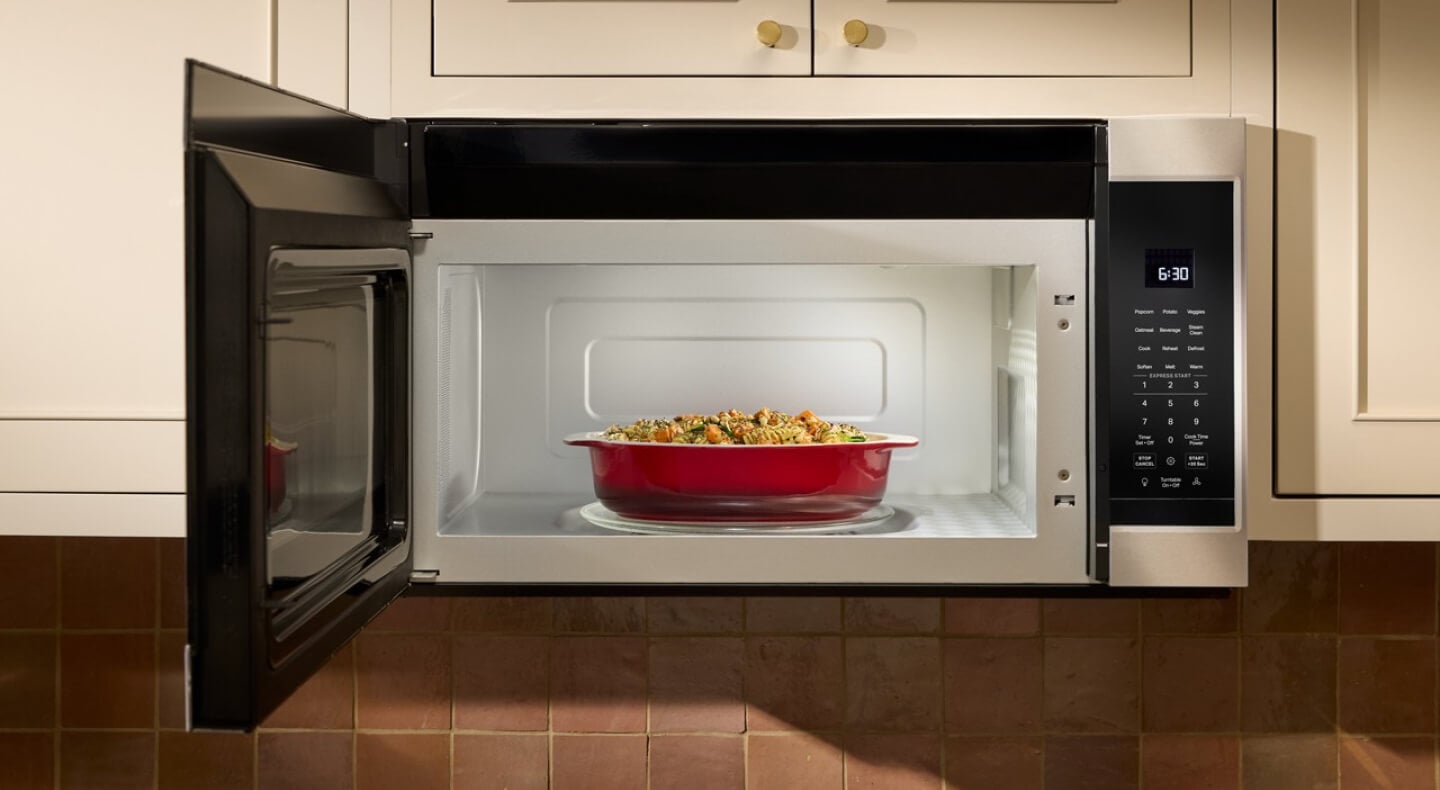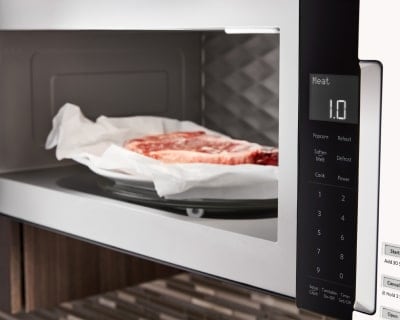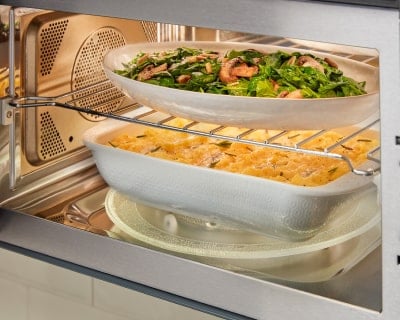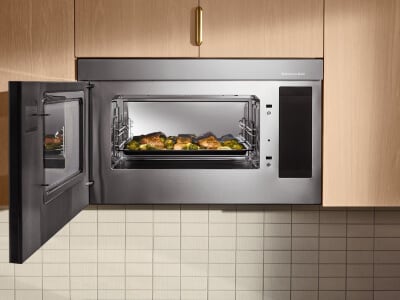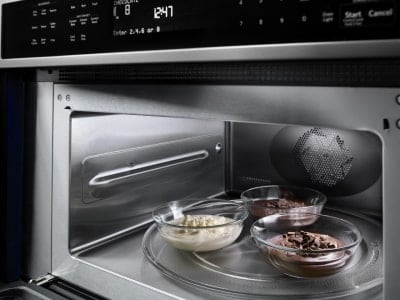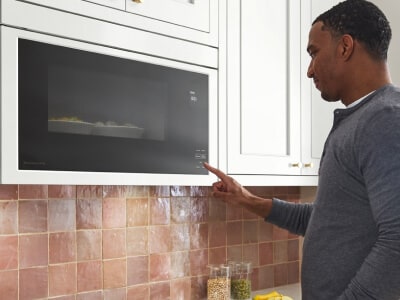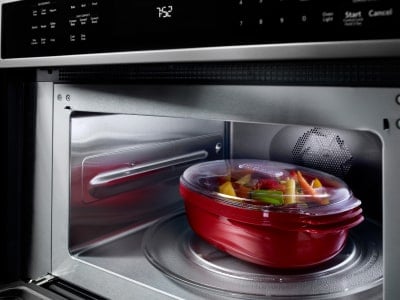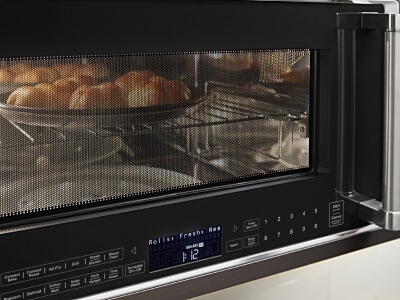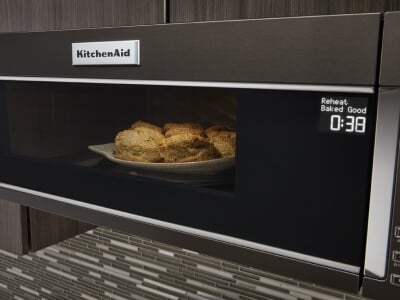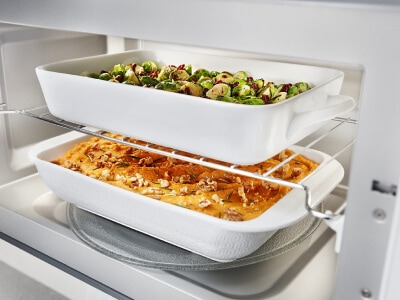
How to use your microwave’s power levels & settings
Microwaves are a useful tool in the kitchen whether they serve as a stepping stone in the process for your homemade baked goods or you need to defrost chicken for your favorite Chicken Piccata recipe. Understanding how to use a microwave and the different microwave power levels and microwave settings is important to get the most out of your appliance. If you’re shopping for a new microwave, KitchenAid® microwaves come in many different styles to suit your needs and your kitchen’s layout.
What are microwave power levels?
Microwaves typically have around 5-10 power settings, and each level has a cooking purpose. Choosing the correct microwave power level can help prevent under or overcooking your food.
Some microwave-specific recipes will specify which level to use by either a percentage or name. If your food is not heating up despite selecting the correct power level, check out this guide to troubleshoot a microwave that’s not heating.
Microwave power settings will vary depending on the model, so consult your product manual before cooking. In general, the following guidelines apply:
100% / High: Quick heating convenience foods and foods with high water content such as soups, beverages and most vegetables. High power settings are ideal for making microwave bread.
90%: Cooking small, tender pieces of meat, ground meat, poultry pieces and fish filets, as well as heating cream soups.
80%: Heating rice, pasta or stirrable casseroles, and cooking and heating foods that need a cook power lower than high, for example, whole fish and meat loaf.
70% / Medium-High: Reheating a single serving of food.
60%: Cooking sensitive foods such as cheese and egg dishes, pudding and custards and cooking non-stirrable casseroles such as lasagna.
50% / Medium: Cooking ham, whole poultry and pot roasts, as well as simmering stews.
40%: Melting chocolate and heating bread, rolls and pastries.
30% / Medium-Low / Defrost: Defrosting bread, fish, meats, including ground beef, poultry and precooked foods.
20%: Softening butter, cheese and ice cream.
10% / Low: Taking chill out of fruit.
How to change microwave power levels
The control panel on a microwave will vary depending on the model, but typically you will press the COOK TIME button and enter the length of time you’d like to cook the food. You will then touch POWER LEVEL and enter the desired power level. Check your product manual for more specifics about your model.
Microwave settings
In addition to changing your microwave’s power levels, many microwaves also allow you to customize how you prepare your food with programmed settings. Different microwave buttons correspond with specific programmed microwave settings. Using these options can make achieving your desired outcome easier and your microwaved results more consistent. Read more about some of these settings below. And check your product manual to find out which settings your microwave has.
Shop KitchenAid® multifunction over-the-range oven
The KitchenAid® Multifunction Over-the-Range Oven combines the versatility of an air fryer, toaster oven, convection oven, microwave and ventilation hood, all in one space-saving appliance designed for flush installation.
Microwave tips
Microwaves are a practical tool for everyday cooks who are accustomed to multitasking in the kitchen. The more you know about how your microwave functions, the more you can enhance your creative process. These microwave tips will help you make the most out of your appliance.
Always use microwave-safe dishes.
Cover food to avoid messes, depending on the setting.
Cut food into smaller pieces for more even and faster cooking.
Regularly clean and replace microwave filters.
Learn how to remove burnt smells to help keep your microwave fresh.
Never microwave anything made of or containing steel, iron, copper or other hard metals.
Learn how to mute a microwave for a quieter cooking experience.
Read your user guide or owner’s manual to be able to fully use all of the settings and options your microwave has to offer. Also, review this guide on microwave wattage to get the optimal use out of your appliance.
Explore KitchenAid® microwave features
If your kitchen is ready for an upgrade, KitchenAid® microwaves offer excellent performance in a variety of styles to suit your needs and your kitchen layout. Browse select models with features like Convection Cooking, which circulates heat around the oven cavity with a 1500-watt convection element that allows baking at temperatures up to 425° F.


